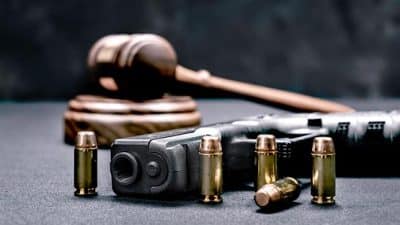
I’ll admit up front to being skeptical about fusion centers, those fuzzy, secretive operations run by state law enforcement agencies that collect bits and pieces of data on suspicious activities from just about anywhere and anyone – and then connect all the dots to draw a purportedly accurate picture of the threat of terrorism in a particular area.
There is nothing wrong with sharing and analyzing data on terrorist activities. After all, the main culprit in allowing 9/11 to happen appears to be the compartmentalization of data by government agencies. Apparently, if more dots had been connected, we might have been spared this tragic episode in American history.
But fusion centers seem to lack direction and they operate in virtual secrecy. When you combine these factors with the naturally suspicious minds that seem drawn to this kind of activity, you might just get a big bloated report that reveals almost nothing about terrorism in Virginia, but leaves you with an urge to run for the hills while you still can.
In its 215 pages, the report names more that 50 terrorist or extremist groups operating in Virginia, from the Klan to animal rights advocates, to anti-abortion activists, to numerous minority religious groups.
It also claims there were more than 400 encounters with al-Qa’ida in Virginia in 2007.
The report frequently uses examples that do not back its assertions. In most cases the examples are merely so vague as to be meaningless. The assessment of threats to the Federal Reserve Building in Richmond, for example, is based largely on reports of people seen photographing it and a group of protestors who gathered outside to oppose the Federal Reserve System.
In other examples, the report seems to undermine its own conclusions. A terrorist threat at Martinsville Speedway is determined to have occurred “because an employee wanted to go home from work early.” A person who acts on the impulse to call in a bomb threat to avoid work is certainly disturbed, but does that make him a terrorist?
I could not find a single example of a credible terrorist threat in the entire report. In section after section, vague generalizations are drawn claiming a significant terrorist threat in such and such place from such and such group, followed by examples like those at the Federal Reserve Building (and typically concluding with a statement about how none of the examples listed actually turned out to be provable terrorist threats).
Perhaps, though, the most disturbing aspect of the report is the racial, demographic and institutional stereotyping that runs rampant through it.
Colleges in particular are breeding grounds for extremism. Many colleges are named — William and Mary and VMI harbor anarchist extremists, for example – and many are identifiable by location. But they are all labeled as dangerous places.
Hampton Roads is a “radicalization node” because of the juxtaposition of a “diverse” military population, two “historically black colleges” and Regent University. Richmond has “race-based extremist groups” because it was the Capital of the Confederacy, and it has several universities and a large minority population.
The report even says at one point that the “election of an African-American President” will increase the potential for terrorist activity in Virginia.
This is more than academic musings or paranoid blog-rants about terrorism. It is a government document that encourages law enforcement officials to assume that racial and religious minorities, students, and demonstrators are all potential terrorists.
If I were a student, a racial minority or a member of any slightly left or right of center organization in Virginia, I would be concerned about law enforcement personnel who take this report seriously. And that would make me think twice before exercising my First Amendment rights of freedom of speech, association and assembly.
After the ACLU of Virginia brought this report to the public’s attention, Governor Kaine announced he was launching an investigation. That’s all fine and well, but our efforts to get to the bottom of this should not stop there.
I urge everyone to read this report (available at http://cryptome.info/cryptout.htm). Then call your Delegates and Senators and demand a full legislative inquiry into the Virginia Fusion Center, which they created and now fund. After that, call your local civic, religious and educational leaders and ask them to read the section of the report that pertains to them. They will probably join you in contacting legislators.
Call the local Chamber of Commerce, too. After all, what business wants to move to a state where terrorists/employees call in bomb threats so they can leave work early?
I don’t know if fusion centers will ever amount to anything but a waste of time and energy. But I do know, based on this report, that the one in Virginia desperately needs an overhaul.
– Kent Willis is the executive director of the American Civil Liberties Union-Virginia.










